Business
Emerging Business Models Shaping Innovative Startups in 2025
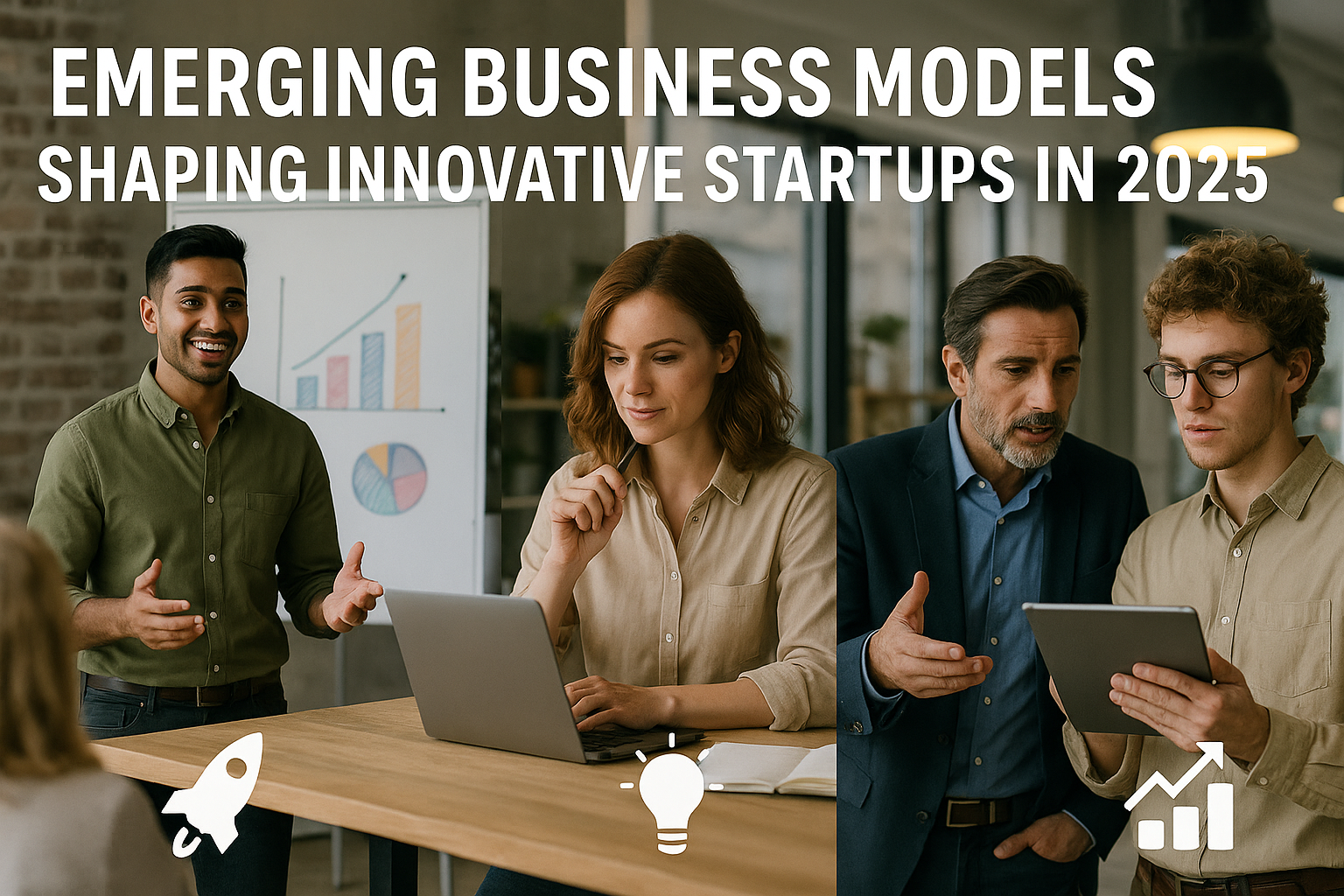
Introduction
The startup world moves fast. In 2025, emerging business models are the key to success. Innovative startups no longer follow a one‑size‑fits‑all playbook. Instead, they harness new structures—like AI‑as‑a‑Service, platform co‑ops, and the circular economy—to stand out.
These business model trends reshape how companies build value, serve customers, and scale. Whether you’re a founder, investor, or curious professional, understanding these models can guide your next move.
In this article, we’ll dive into ten game‑changing approaches. You’ll learn what each model is, why it matters, and how startups use it to innovate. Let’s explore the future of business together.
What Is AI‑as‑a‑Service?
AI‑as‑a‑Service lets startups embed artificial intelligence without building costly infrastructure. Instead of hiring data scientists and buying servers, companies subscribe to an AI platform. They access pre‑trained models for image recognition, natural language processing, or predictive analytics. This model slashes development time and upfront costs.
Startups in healthcare use AI‑as‑a‑Service to analyze medical images. E‑commerce brands recommend products in real time by tapping into AI APIs. Marketing firms auto‑generate ad copy with AI‑powered writing tools.
As a result, innovative startups scale smarter and move faster. To implement this model, test multiple AI APIs, track performance metrics, and choose the one that fits your data and budget.
What Is the Platform Co‑Op Model?
A platform co‑op is a digital platform owned and governed by its users. Unlike venture‑backed platforms, co‑ops give members a voice in decisions and share profits. Examples include ride‑share or delivery co‑ops where drivers hold equity.
This model builds trust and loyalty. Members set fair rates, share in success, and remain committed for the long term. In 2025, co‑ops use blockchain for transparent voting and profit distribution.
To launch a platform co‑op, gather a core group of members, define governance rules, and choose a secure voting system. Co‑ops thrive on community engagement and shared purpose.
What Is the Subscription Model?

Image by: Yandex.com
The subscription model charges customers a recurring fee for access to a product or service.
Subscriptions smooth revenue, improve cash flow, and deepen customer relationships. Startups use tiered plans, annual discounts, and personalized recommendations to reduce churn. In 2025, hybrid B2B2C subscriptions bundle services, software, and hardware in one package. To succeed, focus on customer success, monitor usage data, and adjust pricing based on value delivered.
Subscription Business Model
The subscription business model charges customers on a schedule. Usually, it is monthly or yearly. This model works for software, food, products, and more.
How it works
Customers sign up and pay often. In return, they get products or services. Netflix is a well-known example. You pay each month and watch movies and shows.
Why it works
- Predictable income.
- Easier budgeting for clients.
- Loyal customers stay longer.
Tips to succeed
- Start with a low entry price.
- Offer free trials to attract users.
- Provide perks for long-term members.
- Use data to see why people leave.
What Is Decentralized Finance (DeFi)?

Image by: Yandex.com
Decentralized finance moves banking and investing to blockchain networks. Startups build DeFi apps that let users earn interest, borrow funds, or swap tokens without intermediaries.
Anyone with internet access can participate. Startups use governance tokens to let users vote on new features.
In 2025, cross‑chain DeFi apps work across blockchains, unlocking new liquidity.
What Is the Circular Economy Model?
The circular economy rethinks waste. Instead of “take, make, dispose,” it designs products for reuse, repair, and recycling. Startups selling refurbished electronics, upcycled fashion, or product‑as‑a‑service solutions embrace this model.
Customers subscribe to lease appliances or fashion items, returning them for upkeep. This reduces waste and maintains product value. In 2025, IoT sensors track product lifecycles and predict maintenance needs. To adopt a circular approach, design for easy disassembly, partner with recyclers, and incentivize returns with deposit systems.
What Is the Remote‑First HR‑as‑a‑Service Model?

Image by: Yandex.com
Startups package hiring, benefits administration, and performance management into a monthly subscription.
This model suits high‑growth startups that lack in‑house HR. It scales with headcount and adapts to global labor laws. In 2025, these services integrate AI for candidate matching and chatbots for employee FAQs. To implement, vet providers for global coverage, data security, and seamless API connections to your HRIS.
What Is the Micro‑Entrepreneurship Model?
Micro‑entrepreneurship platforms empower individuals to earn by offering services or selling goods through a gig aggregator. Unlike traditional gig apps, next‑gen platforms provide training, insurance, and profit sharing.
These platforms host thousands of micro‑business owners under a brand umbrella. They supply marketing, logistics, and tax support. To launch, create a strong onboarding program, fair revenue split, and easy‑to‑use tools for micro‑entrepreneurs.
What Is the Blockchain‑Based Tokenization Model?
Tokenization converts assets—real estate, art, or company shares—into blockchain tokens that represent fractional ownership. Startups usher in tokenization to democratize investments and improve liquidity.
Investors can buy and sell small ownership stakes 24/7 on digital exchanges. Smart contracts automate dividends and governance. In 2025, regulated token platforms enable real‑world asset (RWA) trading under securities laws. To adopt tokenization, partner with licensed custodians, ensure compliance, and build transparent reporting dashboards.
What Is the Data Monetization Model?
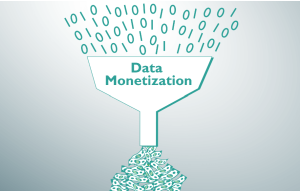
Image by: Yandex.com
Startups capture, analyze, and anonymize user data to create new revenue streams. The data monetization model lets businesses sell insights to partners, advertisers, or researchers.
For example, mobility apps aggregate traffic data to sell to city planners. Health apps share anonymized trend data with wellness brands. In 2025, privacy‑preserving techniques like differential privacy and federated learning secure user trust. To make money from data, first get clear consent from users. Use secure data pipelines. Offer value to users with better services or discounts.
What Is the Outcome‑Based or Performance‑Based Model?
Rather than charging for products or hours, startups now tie fees to client outcomes. In the performance-based model, you pay only if you meet a target—like increased sales, cost savings, or energy reduction.
This aligns incentives and builds trust. Marketing startups charge a share of revenue growth they drive. Energy‑services firms share savings from efficiency upgrades.
In 2025, outcome‑based contracts use IoT sensors and AI analytics to verify results in real time. To launch, define clear KPIs, set fair pricing, and ensure transparent measurement methods.
Tips for Adopting Emerging Models

Image by: Yandex.com
Start by matching a model to your strengths and market needs.
Gather feedback from early customers to refine pricing and service terms. Use lean experiments to validate demand and unit economics. Build flexible tech architectures—using APIs and microservices—to switch or combine models as you learn.
Focus on compliance and data security, especially for blockchain or data monetization ventures. Collaborate with industry groups and regulators to shape fair rules. Finally, invest in change management and team training for smooth transitions.
Relevant Table: Model Comparison
| Business Model | Key Feature | Main Benefit | Example Startup |
|---|---|---|---|
| AI‑as‑a‑Service | Plug‑and‑play AI APIs | Fast, low‑cost AI integration | VisionAI Health |
| Platform Co‑Op | User ownership and governance | Shared profits, strong loyalty | FairRide Co‑op |
| Subscription Model | Recurring revenue | Predictable cash flow | MealBox Monthly |
| Decentralized Finance (DeFi) | Smart‑contract finance | Open, global, permissionless banking | LendChain |
| Circular Economy Model | Product reuse & return incentives | Waste reduction, extended value | EcoLease Furnishings |
| HR‑as‑a‑Service | On‑demand HR & compliance | Scalable, global workforce support | RemoteHR Pro |
| Micro‑Entrepreneurship Model | Gig aggregator + training | Empowered micro‑businesses | TaskWise |
| Tokenization Model | Asset fractional ownership | Liquidity, access to high‑value assets | RealToken |
| Data Monetization Model | Anonymized data insights | New revenue streams | CrowdData Analytics |
| Outcome‑Based Model | Pay‑for‑performance contracts | Aligned incentives, risk sharing | SaleBoost Marketing |
Conclusion
In 2025, innovative startups embrace a variety of emerging business models to gain an edge. We explored ten top models, their features, benefits, and real‑world examples.
To apply these trends, start small with pilot projects, involve customers early, and build flexible tech infrastructure. Stay agile, prioritize compliance, and align your team around clear metrics. By choosing the right model and executing with focus, your startup can thrive in today’s fast‑changing market.
Business
GPS Excavators and Track Loader Hire Services Efficiency
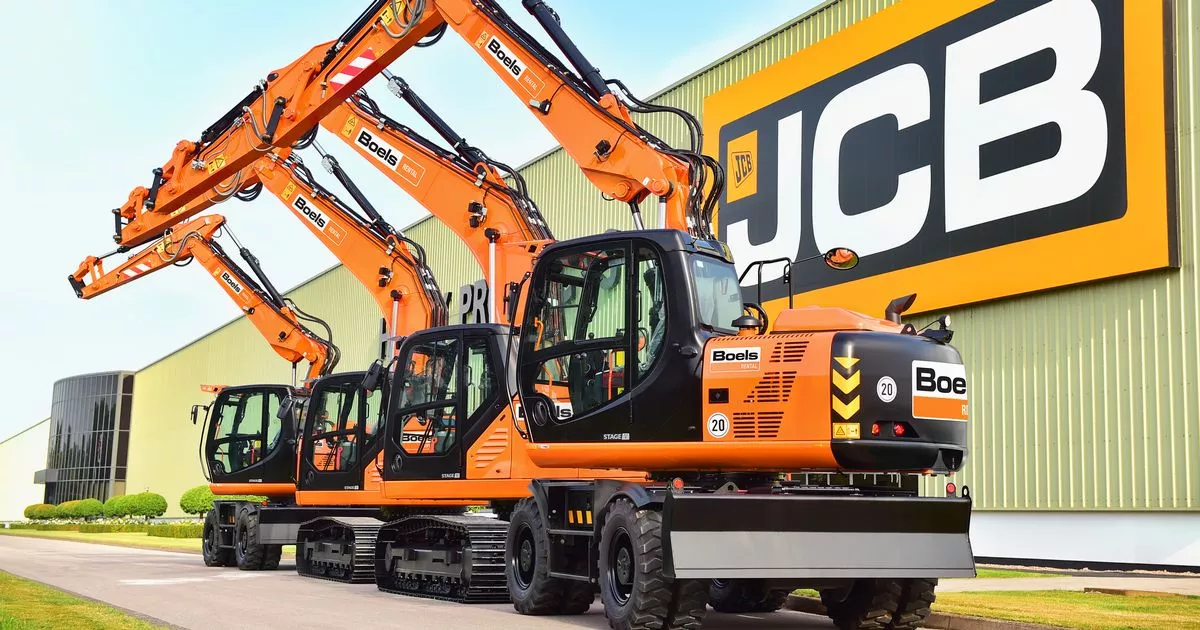
Introduction
Construction projects today face increasing pressure to be faster, safer, and more cost-effective. Modern technology and specialized machinery play a crucial role in meeting these demands. GPS excavators and track loader hire services have emerged as game-changers in the construction industry. These tools not only streamline operations but also improve accuracy, reduce waste, and enhance productivity. This article explores how GPS-enabled excavators and track loaders revolutionize construction efficiency, the benefits of hiring these machines, and why more contractors are adopting these solutions for their projects.
What Are GPS Excavators and Track Loaders?
1. GPS Excavators
GPS excavators are advanced construction machines equipped with satellite navigation systems. These systems allow operators to perform digging, grading, and leveling tasks with precision. Unlike traditional excavators, GPS models provide real-time data, automated guidance, and precise depth control. This technology reduces human error, improves accuracy, and saves both time and materials on site.
2. Track Loaders
Track loaders are versatile machines that combine the features of a bulldozer and a loader. They are designed for heavy-duty tasks such as moving soil, debris, or construction materials. Track loaders can work on rough, uneven terrain, making them ideal for large construction projects. Hiring track loaders ensures that projects have access to powerful and efficient machinery without the cost of ownership.
Benefits of GPS Excavators in Construction
- Precision and Accuracy: GPS technology allows operators to dig and grade with extreme accuracy. This precision reduces over-excavation or under-excavation, preventing material waste and saving costs.
- Time Efficiency: With GPS guidance, operators can complete tasks faster. Automated measurements and real-time data reduce the need for manual checking and corrections, allowing projects to stay on schedule.
- Reduced Labor Costs: GPS excavators require fewer personnel to operate efficiently. A single operator can manage complex digging and grading tasks, reducing the need for additional labor on site.
- Improved Safety: GPS systems help prevent errors that could lead to accidents. By providing exact depth and position information, operators can work safely, avoiding hazards and damage to underground utilities.
- Better Project Planning: Real-time data from GPS systems allows project managers to monitor progress and adjust plans efficiently. This ensures projects remain on track and within budget.
Advantages of Hiring Track Loaders
- Cost Savings: Buying a track loader is a significant investment. Hiring allows construction companies to access high-quality machinery without large upfront costs, saving capital for other project needs.
- Flexibility: Track loader hire services offer flexibility in machine selection. Projects can choose machines with the right specifications and capabilities for specific tasks, ensuring efficiency.
- Maintenance-Free Operation: Hiring a machine means maintenance and repairs are often handled by the service provider. This reduces downtime and keeps operations smooth.
- Access to Latest Technology: Hire services often provide modern, well-maintained track loaders with the latest technology, allowing contractors to benefit from improved performance and fuel efficiency.
- Scalability for Projects: As project demands increase, contractors can hire additional machines to meet deadlines without the burden of purchasing extra equipment.
How GPS Excavators and Track Loaders Work Together
Combining GPS excavators with track loaders can significantly boost construction efficiency. Excavators handle precise digging and grading tasks, while track loaders transport soil, debris, and materials quickly across the site. This synergy reduces bottlenecks and ensures a smoother workflow.
- Excavation: GPS excavators dig trenches, foundations, or grading areas with high accuracy.
- Material Transport: Track loaders move excavated material to designated areas efficiently.
- Site Cleanup: Track loaders clear debris, keeping the construction site organized and safe.
This coordinated approach reduces idle time, increases productivity, and ensures projects progress faster without compromising quality.
Applications in Modern Construction
- Residential Projects: GPS excavators can precisely dig foundations, basements, and trenches for utilities. Track loaders move soil and construction materials, making small and large residential projects more efficient.
- Commercial Construction: Large commercial sites benefit from GPS technology for grading, leveling, and excavation tasks. Track loaders support heavy material movement and site preparation.
- Road and Infrastructure Projects: Precision excavation is crucial for road construction, drainage systems, and utilities. GPS excavators ensure accurate grading, while track loaders move materials like asphalt, gravel, and soil efficiently.
- Landscaping and Site Development: Both machines help in shaping land, moving soil, and clearing debris, ensuring landscaping and site development projects meet design specifications accurately.
Environmental and Sustainability Benefits
Using GPS excavators and track loaders also contributes to environmentally responsible construction:
- Reduced Fuel Consumption: Accurate digging and grading minimize unnecessary machine movements, saving fuel.
- Less Material Waste: Precision excavation reduces overuse of materials.
- Lower Emissions: Hiring modern machines with efficient engines ensures lower greenhouse gas emissions compared to older equipment.
- Site Preservation: Efficient machinery reduces soil disturbance, protecting surrounding landscapes.
Choosing the Right Hire Service
When hiring GPS excavators or track loaders, consider the following:
- Machine Specifications: Select machines that match your project requirements in terms of size, capacity, and technology.
- Maintenance Support: Ensure the hire service offers regular maintenance and emergency support to minimize downtime.
- Rental Terms: Check for flexible rental periods and clear terms regarding delivery, usage, and return.
- Operator Training: Some hire services provide trained operators for GPS-equipped machinery, ensuring safe and efficient operation.
- Reputation of Service Provider: Choose a hire company with a good track record of reliability, service quality, and well-maintained equipment.
Tips for Maximizing Efficiency
- Plan the Workflow: Coordinate excavation and material transport tasks to avoid machine idle time.
- Leverage GPS Data: Use real-time GPS information to monitor progress, adjust excavation depth, and track material volumes.
- Regular Maintenance: Even hired machines require routine checks to ensure optimal performance.
- Train Operators: Proper training for GPS systems and track loader operation ensures maximum productivity and safety.
- Monitor Fuel Use: Track fuel consumption to reduce costs and improve sustainability.
Conclusion
GPS excavators and track loader hire services are transforming construction efficiency by combining precision, speed, and cost-effectiveness. GPS technology allows operators to perform tasks accurately, reducing errors, material waste, and labor costs. Track loaders provide flexible, powerful support for transporting materials and site cleanup. Hiring these machines gives contractors access to advanced equipment without large upfront investments, ensuring projects stay on schedule and within budget. By integrating these technologies and services, construction companies can achieve higher productivity, safer work environments, and more sustainable operations.
Business
Modern Network Solutions: MPLS, Cloud Networking and Managed Services
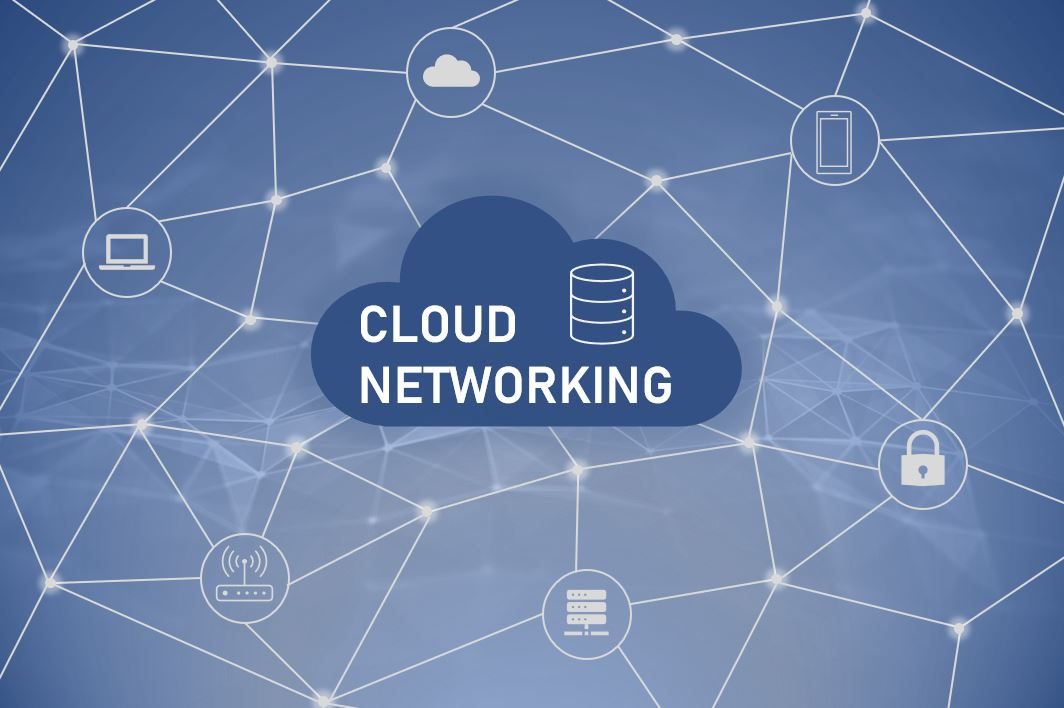
Introduction
In today’s digital-first world, businesses rely heavily on seamless, secure, and efficient networking solutions to stay competitive. Traditional networking approaches often struggle to keep pace with modern demands such as cloud applications, remote work, and global operations. This is where MPLS connectivity, cloud networking, and managed services play a vital role. By combining advanced network technologies with expert management, businesses can enhance performance, improve security, and reduce costs. Understanding these modern solutions can help companies streamline operations, connect teams efficiently, and scale networks to meet evolving needs.
Understanding MPLS Connectivity
MPLS, or Multi-Protocol Label Switching, is a high-performance network technique that directs data efficiently between nodes. Unlike traditional routing, MPLS labels data packets for faster and more reliable delivery. This technology is widely used by enterprises to create private networks that connect multiple locations securely.
Key Benefits of MPLS
- Enhanced Reliability: MPLS networks offer stable connections with minimal downtime.
- Improved Speed and Performance: Data is prioritized based on labels, ensuring critical applications run smoothly.
- Scalability: MPLS can easily connect multiple office locations without significant infrastructure changes.
- Quality of Service (QoS): Allows businesses to prioritize traffic, ensuring essential services like VoIP and video conferencing perform optimally.
- Security: MPLS networks are private and less susceptible to external threats compared to public internet connections.
Ideal Use Cases
- Businesses with multiple branch offices
- Enterprises using real-time applications like VoIP and video conferencing
- Companies needing reliable connections for critical cloud applications
Cloud Networking Explained
Cloud networking refers to the practice of using cloud-based infrastructure to manage and deliver network services. Unlike traditional networks, cloud networking provides flexibility, scalability, and remote accessibility, making it ideal for modern enterprises.
Key Advantages of Cloud Networking
- Flexibility and Accessibility: Employees can access the network securely from anywhere in the world.
- Cost Efficiency: Reduces the need for extensive on-premises infrastructure.
- Scalability: Easily expand or reduce network resources according to business needs.
- Integration with Cloud Applications: Seamlessly supports SaaS, PaaS, and other cloud services.
- Simplified Management: Centralized control makes monitoring and configuration easier.
Popular Applications
- Remote workforce connectivity
- Secure access to cloud-based software
- Multi-site enterprise networking
- Disaster recovery and business continuity
The Role of Managed Services
Managed services involve outsourcing network management to specialized providers. Instead of handling network monitoring, maintenance, and troubleshooting internally, businesses rely on experts to ensure optimal performance and security.
Benefits of Managed Services
- Proactive Monitoring: Issues are detected and resolved before they impact business operations.
- Expert Support: Access to certified professionals with deep networking knowledge.
- Cost Savings: Reduces the need for an in-house IT team while providing consistent support.
- Security Management: Includes firewalls, antivirus updates, and network threat mitigation.
- Focus on Core Business: Allows companies to concentrate on growth rather than technical issues.
Ideal Scenarios for Managed Services
- Companies with limited IT resources
- Businesses experiencing rapid growth
- Enterprises requiring 24/7 network monitoring and support
How MPLS, Cloud Networking, and Managed Services Work Together
Combining MPLS connectivity, cloud networking, and managed services offers businesses a complete networking solution. While MPLS ensures reliable and secure connections between locations, cloud networking provides flexibility and remote access. Managed services then optimize these networks, monitor performance, and secure data against threats.
Key Benefits of Integration
- Optimized Performance: MPLS prioritizes critical traffic, cloud networking provides agility, and managed services ensure continuous operation.
- Enhanced Security: A layered approach protects sensitive data across private MPLS networks and cloud services.
- Scalable Solutions: Businesses can quickly expand networks without worrying about infrastructure complexity.
- Reduced Downtime: Proactive monitoring and maintenance prevent disruptions in critical business operations.
- Simplified Management: Centralized control through managed services reduces complexity and administrative burden.
Industry Applications
Healthcare
Hospitals and clinics rely on fast, secure networks to manage patient records, telemedicine, and internal communications. MPLS and cloud networking ensure smooth data transfer between facilities, while managed services maintain compliance with privacy regulations.
Finance
Banks and financial institutions require high-security networks to process transactions and communicate across branches. MPLS ensures reliability, cloud networking supports mobile and online banking, and managed services handle continuous monitoring and threat prevention.
Retail
Retail chains use cloud networking for inventory management, point-of-sale systems, and e-commerce platforms. MPLS guarantees stable connections across stores, and managed services monitor network performance to prevent downtime.
Education
Universities and schools rely on cloud networking for online learning platforms and virtual classrooms. MPLS supports campus connectivity, while managed services handle network maintenance and cybersecurity.
Future Trends in Modern Networking
- SD-WAN Integration: Software-defined WAN technology is complementing MPLS by providing more flexible and cost-effective network management.
- Hybrid Cloud Networking: Combining private and public cloud networks for optimal performance and security.
- AI-Powered Network Management: Artificial intelligence is being used for predictive maintenance, traffic optimization, and threat detection.
- Edge Computing: Reducing latency by processing data closer to end-users, improving application performance.
- IoT Connectivity: Supporting a growing number of connected devices with secure and scalable networking solutions.
Tips for Choosing the Right Network Solution
- Assess Business Needs: Consider the size of your organization, the number of locations, and the type of applications you run.
- Evaluate Providers: Look for experience, certifications, customer support, and security protocols.
- Plan for Scalability: Ensure the solution can grow with your business without significant additional costs.
- Focus on Security: Confirm the provider offers robust security measures, including encryption and monitoring.
- Consider Cost vs. Value: Compare the overall value of reliability, support, and performance rather than just price.
Conclusion
MPLS connectivity, cloud networking, and managed services provide businesses with modern, reliable, and secure network solutions. MPLS ensures high-performance connectivity across multiple locations, cloud networking offers flexibility and remote access, and managed services optimize performance while reducing operational complexity. Together, these technologies help enterprises improve efficiency, support remote teams, and secure critical data. As businesses continue to adopt digital solutions and scale operations, integrating these advanced networking technologies ensures smooth communication, reliable data transfer, and long-term growth, making them essential for any modern enterprise.
Business
Aircraft Ignition System Market Growth and Forecast to 2032
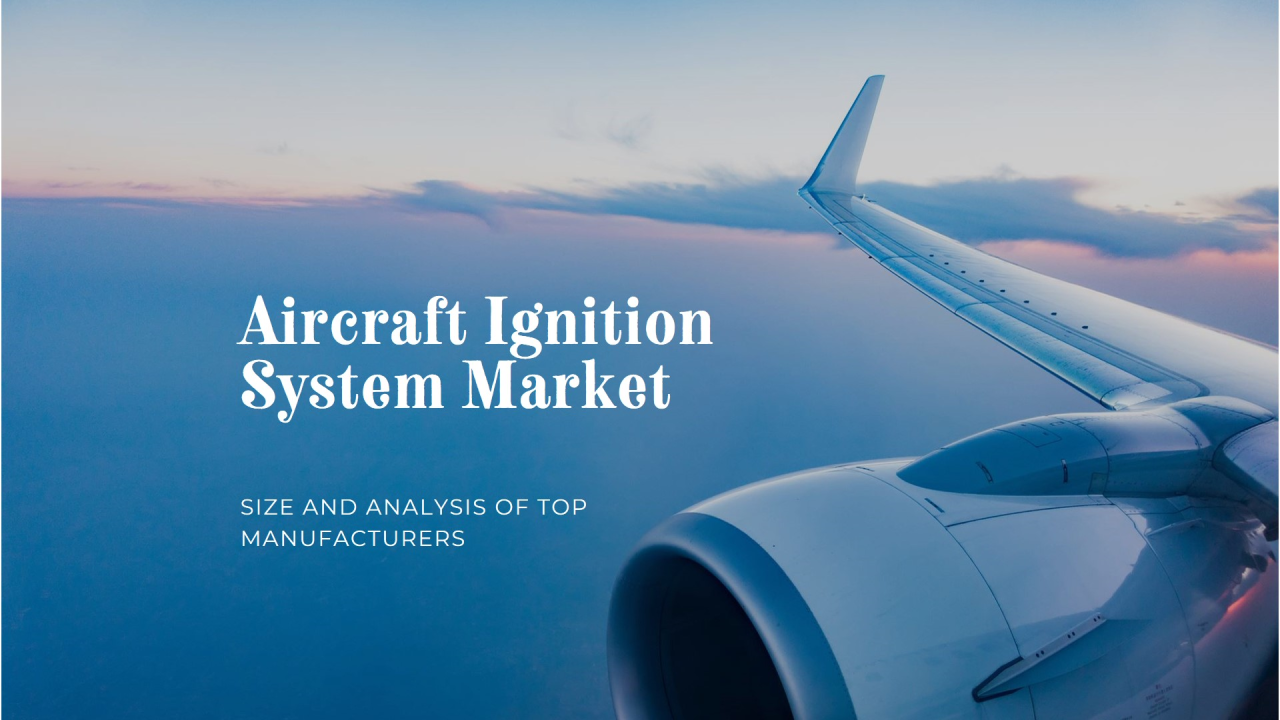
Introduction
The global aircraft ignition system market is witnessing steady growth, fueled by rapid advancements in aviation technology and increasing aircraft production worldwide. Valued at USD 482.5 million in 2024, the market is expected to reach USD 508.1 million in 2025 and accelerate to USD 766.5 million by 2032, reflecting a robust compound annual growth rate of 6.05%. Key drivers include modernization in aviation, technological breakthroughs in ignition systems, and a growing focus on operational reliability and efficiency, particularly in the U.S., which leads market innovation and adoption.
Understanding Aircraft Ignition Systems
Aircraft ignition systems are critical components that ensure the proper start and continuous operation of aircraft engines. They provide the spark needed to ignite the fuel-air mixture in combustion chambers, enabling smooth engine performance and safe flight operations. These systems are essential for both commercial and military aircraft and contribute significantly to engine efficiency, reliability, and safety.
Types of Aircraft Ignition Systems
- High-Energy Ignition Systems: Provide strong sparks for engines operating under extreme conditions.
- Low-Energy Ignition Systems: Common in smaller aircraft and general aviation engines, offering reliable performance with less power consumption.
- Electronic Ignition Systems: Advanced systems that use electronic controls to optimize spark timing and improve fuel efficiency.
- Magneto Ignition Systems: Traditional systems still widely used in light aircraft due to reliability and simplicity.
Importance of Ignition Systems
- Ensure safe engine start-up and operation.
- Improve fuel efficiency and reduce emissions.
- Enhance engine lifespan and reduce maintenance costs.
- Enable high-altitude performance and adaptability to extreme temperatures.
Market Overview
The aircraft ignition system market is poised for strong growth due to rising global air traffic, increased aircraft production, and continuous technological innovation. Commercial aviation expansion, particularly in emerging economies, is a significant driver. Moreover, the military aviation segment continues to demand reliable ignition systems for advanced aircraft and UAVs.
Market Drivers
- Rising Aircraft Production: Increased demand for commercial and private aircraft boosts ignition system requirements.
- Technological Innovation: Advancements in electronic ignition systems and high-energy solutions enhance engine efficiency and reliability.
- Focus on Safety and Reliability: Stringent aviation regulations and safety standards necessitate advanced ignition systems.
- Modernization of Military Aircraft: Upgrading older fleets and integrating new aircraft platforms drives demand.
Market Restraints
- High production and maintenance costs of advanced ignition systems.
- Competition from traditional magneto systems in small aircraft.
- Dependence on aerospace supply chains, which can be affected by geopolitical or economic factors.
Benefits of Advanced Aircraft Ignition Systems
Advanced aircraft ignition systems offer many benefits that support both safety and efficiency in aviation. These systems help engines start quickly and reliably, even in extreme weather conditions or at high altitudes. They make fuel burn more completely, which improves engine power and reduces fuel consumption.
Over time, this helps airlines save money and reduces the environmental impact of their operations. Modern ignition systems are also designed to last longer, with components that resist wear and require less frequent maintenance. By improving performance, safety, and cost savings at the same time, advanced ignition systems play a key role in supporting the overall improvement of the aviation industry.
Role of Ignition Systems in the Aviation Industry
Ignition systems are essential parts of aircraft engines because they provide the spark needed to start and sustain engine operation. Without a strong and dependable ignition system, an aircraft cannot take off or maintain steady flight. These systems help control combustion inside the engine, which affects power output, fuel use, and overall performance.
They are used in many types of aircraft, from light private planes to large commercial jets and military aircraft. As modern aircraft become more advanced and efficient, ignition systems must also improve to match new engine designs. This makes ignition technology a vital piece of aviation safety, reliability, and long-term performance.
Regional Insights
North America
The U.S. dominates the global aircraft ignition system market due to advanced aviation technology, a high concentration of aircraft manufacturers, and substantial defense spending. Leading aerospace companies continually invest in innovation, driving adoption of electronic and high-energy ignition systems.
Europe
Europe is a significant market, with strong aviation hubs in France, Germany, and the UK. Technological collaboration among aircraft manufacturers and suppliers, as well as modernization of regional airlines, contributes to market growth.
Asia-Pacific
The Asia-Pacific region presents high growth potential due to rapid air travel expansion, rising disposable incomes, and increasing investments in aviation infrastructure. Countries like China and India are emerging as key markets for both commercial and military aircraft.
Latin America and Middle East & Africa
These regions are witnessing gradual growth, supported by increasing air traffic, airline fleet expansion, and the adoption of modern aviation technology. Infrastructure upgrades and new aircraft deliveries are contributing factors.
Key Trends
1. Shift Toward Electronic Ignition Systems
Electronic ignition systems are becoming the standard in modern aircraft due to superior fuel efficiency, precise spark timing, and reduced maintenance needs compared to traditional magneto systems.
2. Integration with Engine Health Monitoring
Advanced ignition systems are increasingly integrated with engine monitoring technologies, allowing predictive maintenance, reducing downtime, and improving flight safety.
3. Lightweight and Compact Designs
Manufacturers are focusing on developing smaller, lighter ignition systems to reduce aircraft weight, improve fuel efficiency, and meet stringent design specifications.
4. Demand in UAV and Drone Applications
The rise of drones and unmanned aerial vehicles (UAVs) for commercial, defense, and research purposes has created new opportunities for ignition system suppliers.
5. Sustainability and Environmental Compliance
Modern ignition systems are being designed to optimize fuel combustion and reduce emissions, aligning with global sustainability goals and stricter environmental regulations.
Competitive Landscape
The aircraft ignition system market is highly competitive, with manufacturers focusing on innovation, strategic partnerships, and global expansion. Companies invest in research and development to produce advanced solutions that improve engine performance and reliability.
Key Players
- Honeywell International Inc.: Leading supplier of ignition systems for commercial and military aircraft.
- GE Aviation: Focused on electronic ignition solutions and advanced engine integration.
- UTC Aerospace Systems (Collins Aerospace): Provides high-performance ignition components for various aircraft types.
- SAFRAN Group: Offers integrated solutions for modern aviation engines.
- Magneti Marelli: Supplies traditional and electronic ignition systems for general aviation and specialized aircraft.
Strategies in the Market
- Product Innovation: Development of electronic and high-energy ignition systems for efficiency and safety.
- Strategic Partnerships: Collaborations with engine manufacturers and airlines to integrate new technology.
- Geographic Expansion: Expanding production and supply chains to emerging aviation markets.
- Aftermarket Services: Providing maintenance, repair, and overhaul services to strengthen customer loyalty.
Challenges in the Market
Even with strong growth, the aircraft ignition system market faces several important challenges. One major challenge is the high cost of developing advanced ignition technologies, which require specialized materials, testing, and certification. Strict aviation safety standards mean that every new system must go through long and expensive approval processes.
Another challenge is the shortage of skilled engineers and technicians who can design, test, and maintain these systems. Supply chain disruptions also affect the availability of key components, leading to delays in manufacturing and delivery. Rising raw material prices and increased competition among suppliers can also create difficulties. These challenges may slow down development and increase costs for companies working in the ignition system market.
- High Research and Development Costs: Designing reliable, efficient, and compliant ignition systems requires significant investment.
- Regulatory Approvals: Meeting strict aviation standards and certifications can delay product launch.
- Supply Chain Dependency: Disruptions in the supply of electronic components or raw materials can affect production.
- Competition from Legacy Systems: Older magneto systems still remain in use in general aviation, limiting full adoption of electronic systems.
Opportunities for Growth
- Expansion in Emerging Markets: Rising air travel demand in Asia-Pacific and Latin America presents growth opportunities.
- Advanced Engine Integration: Collaboration with engine manufacturers to develop optimized ignition systems for next-generation aircraft.
- UAV and Drone Market: Increasing adoption of unmanned aircraft creates a niche market for lightweight ignition solutions.
- Environmental Focus: Eco-friendly ignition systems that reduce fuel consumption and emissions align with global sustainability trends.
- Military Modernization: Demand for high-performance ignition systems in fighter jets, transport planes, and military UAVs.
Future Outlook
The global aircraft ignition system market is set for steady growth, supported by ongoing technological advancements, modernization of commercial and military fleets, and increasing demand from emerging aviation markets. Electronic and high-energy ignition systems will dominate, driven by efficiency, safety, and environmental considerations. Integration with predictive maintenance technologies and engine health monitoring will further enhance market prospects. By 2032, the market is projected to reach USD 766.5 million, reflecting robust opportunities for manufacturers, suppliers, and aviation stakeholders globally.
The future outlook for the aircraft ignition system market up to 2032 is positive, with many opportunities for growth and innovation. As air travel demand increases worldwide, aircraft manufacturers will continue to invest in more efficient and reliable engine technologies. The shift toward electric, hybrid, and low-emission aircraft will encourage the development of new ignition solutions designed for modern power systems.
Advances in digital monitoring, automation, and smart sensors will also make ignition systems more intelligent and easier to maintain. Growing investments in defense aviation and unmanned aircraft will open new markets as well. Although challenges remain, the strong focus on safety, performance, and fuel efficiency will support continued market expansion. By 2032, the industry is expected to see steady growth driven by technological improvements and global aviation needs.
Conclusion
The aircraft ignition system market is on a strong upward trajectory, with projected growth from USD 482.5 million in 2024 to USD 766.5 million by 2032 at a CAGR of 6.05%. Growth is driven by technological advancements, rising aircraft production, and the need for reliable, fuel-efficient, and environmentally friendly ignition solutions. North America leads the market, while Asia-Pacific and other emerging regions present new opportunities. Manufacturers focusing on electronic systems, lightweight designs, UAV applications, and engine integration are positioned to capitalize on this expanding market, ensuring safer and more efficient aviation operations worldwide.
Browse Reports Here:
- https://www.kingsresearch.com/report/aircraft-ignition-system-market-2960
- https://itbusinesstoday.com/tech/cloud/how-japans-next-gen-supercomputing-push-is-powering-a-new-wave-of-enterprise-innovation/
- https://itbusinesstoday.com/tech/ai-in-it-operations-the-next-step-in-enterprise-automation/
- https://aitech365.com/business-technology/analytics/fresche-launches-db2-web-query-alternative-for-ibm-i-data/
-
Business2 years ago
Cybersecurity Consulting Company SequelNet Provides Critical IT Support Services to Medical Billing Firm, Medical Optimum
-
Business2 years ago
Team Communication Software Transforms Operations at Finance Innovate
-
Business3 years ago
Project Management Tool Transforms Long Island Business
-
Business2 years ago
How Alleviate Poverty Utilized IPPBX’s All-in-One Solution to Transform Lives in New York City
-
health3 years ago
Breast Cancer: The Imperative Role of Mammograms in Screening and Early Detection
-
Sports3 years ago
Unstoppable Collaboration: D.C.’s Citi Open and Silicon Valley Classic Unite to Propel Women’s Tennis to New Heights
-
Art /Entertainment3 years ago
Embracing Renewal: Sizdabedar Celebrations Unite Iranians in New York’s Eisenhower Park
-
Finance3 years ago
The Benefits of Starting a Side Hustle for Financial Freedom































